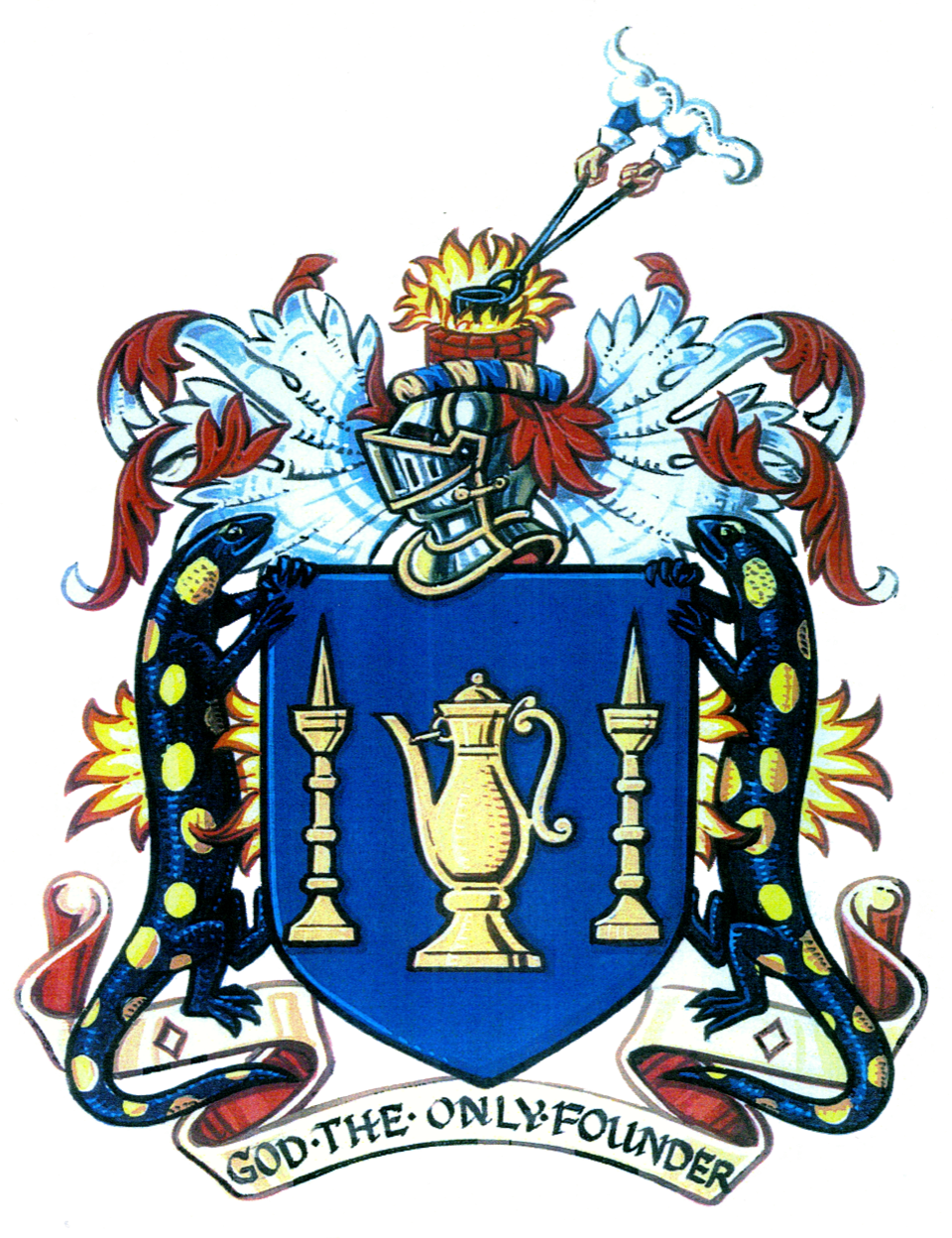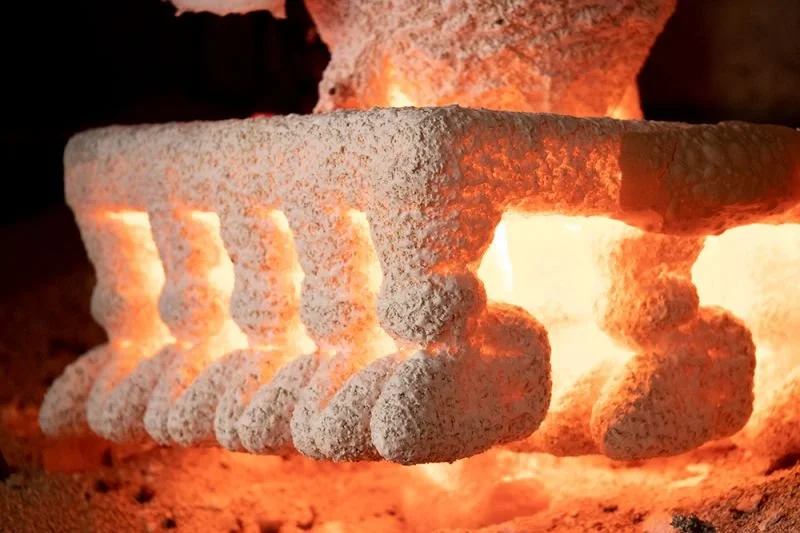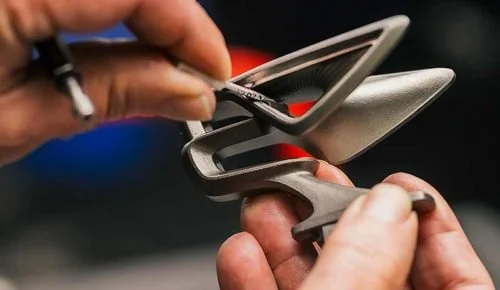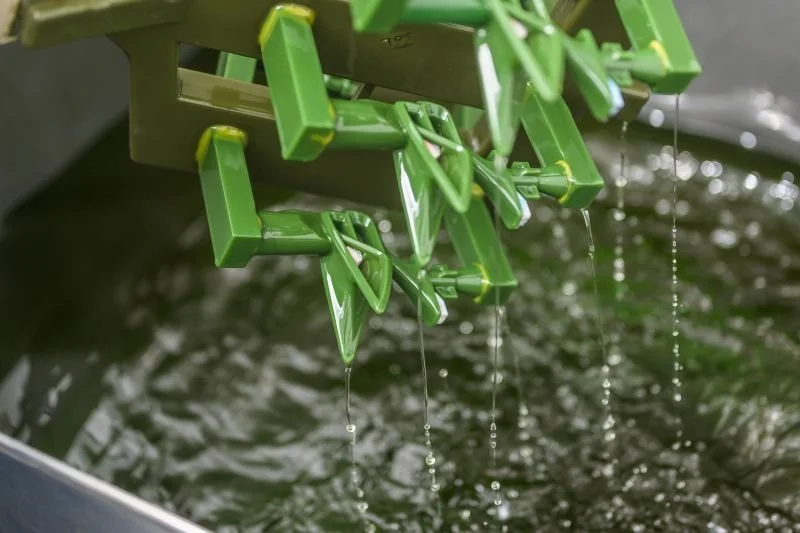Bentley’s ‘Flying B’ on show during Foundry visit
Members of The Founders’ Company and guests joined with Master Alan Hughes to enjoy a fascinating visit to Lestercast Foundry, in Leicester, including a tour of their casting production facilities.
Hosting the visit, Lestercast’s Technical Manager, Russell Gray Eng Tech Prof MICME used a recent project to design and produce a new mascot for Bentley’s Flying Spur, the ‘Flying B’ bonnet mascot, to take the visitors through the investment casting process.
He outlined how Bentley Motors had approached the company to produce a mascot design, the first to feature a fully electronic deployment, with clear acrylic wings and the first to be internally illuminated, with a cover plate to replace the mascot when stowed.
He explained how the company were involved in many design iterations in conjunction with Bentley engineers to ensure the component, cast as a single piece in 316 stainless steel, could be produced to specification, complete with a complex cored internal passageway to allow two 1mm diameter wires to pass through to enable the illumination of the ‘Flying B’.
Simulation of the filling and metal cooling was then carried out at an early stage to optimise the design and ensure that there would be no shrinkage in the final part, before tooling in aluminium was produced to create the wax impressions for investment casting, including positioning jigs to ensure that the ceramic cores used to create the internal passageways could be correctly sited. We saw how the waxes were then assembled onto trees including the running system, which is essential to enable the molten metal to correctly enter the casting cavity. Careful investment of the wax was then carried out layer by layer, with drying in conditioned drying chambers between coats. Russell explained how the wax is then melted, removed and collected for recycling using a steam autoclave and the shells are then fired at up to 1000 degC to make them strong enough to hold the molten steel during casting.
The visitors were able to see all the stages in the investment casting production process including the melting furnaces being charged with alloy and the shells being pre-heated prior to being filled with the molten metal. Once the shell is removed and the part separated mechanically from the running system, they go for polishing and assembly before being delivered to Bentley.
Lestercast Ltd, which is 50 years old and employs 40 people, produce a wide range of parts to internationally accredited standards for a wide range of global customers from sectors including the automotive, motorsport, marine, medical and defence industries and in 2024 attained Fit for Nuclear status as well as investing in more sustainable processes and their future talent through training and apprenticeships. The company also takes advantage of additive manufacturing techniques for rapid prototyping and low series production as well as volume production of precision parts in a wide range of alloys, including steels, brasses and bronzes, super alloys and zinc.
In thanking Russell and the team at the company for hosting the visit, Committee Chair, Pam Murrell FICME said, “Through the Industry Committee, we are really keen that our fellow Liverymen and Freemen are able to see what the modern UK foundry and castings industry is able to produce in metal – the industry has a long history but also a great future and we are proud of our connections to the trade”. Russell Gray agreed commenting that that he was pleased to be able to “showcase what we do at Lestercast and as an industry, especially to such a prestigious audience. I hope everyone went away with a good impression and a better understanding.”




